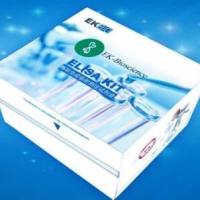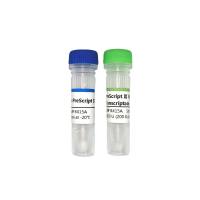Becker-Andre and Hahlbrock first described competitive RT-PCR (1 ). In the competitive RT-PCR, a synthetic RNA/DNA control (competitor), generally called internal standard, is coamplified with the target nucleic acid in the same tube (2 ,3 ). Ideally, both target and internal standard will amplify with equivalent efficiency, and products will be distinguishable after amplification by their sizes. Thus, the internal standards that competitive RT-PCR requires should be very close in composition to the target sequences. Quantification is then performed by comparing the PCR signal of the target amplicon with the PCR signal obtained with known concentrations of the internal standard. Most competitive RT-PCR protocols use serial dilutions of competitor with a constant amount of unknown mRNA in the RT-PCR process (4 ). This procedure requires 4-8 reactions for each sample in order to plot the ratio of products against the amount of added competitor to determine the equimolar amount for each unknown sample. Calibration curves, relating the logarithm of the ratio of both PCR products to the logarithm of the initial amount of competitor, are then constructed. If both target and competitor amplify with equivalent efficiency, the amount of initial target mRNA can be obtained from the point on the curve where target and standard values are equal.






